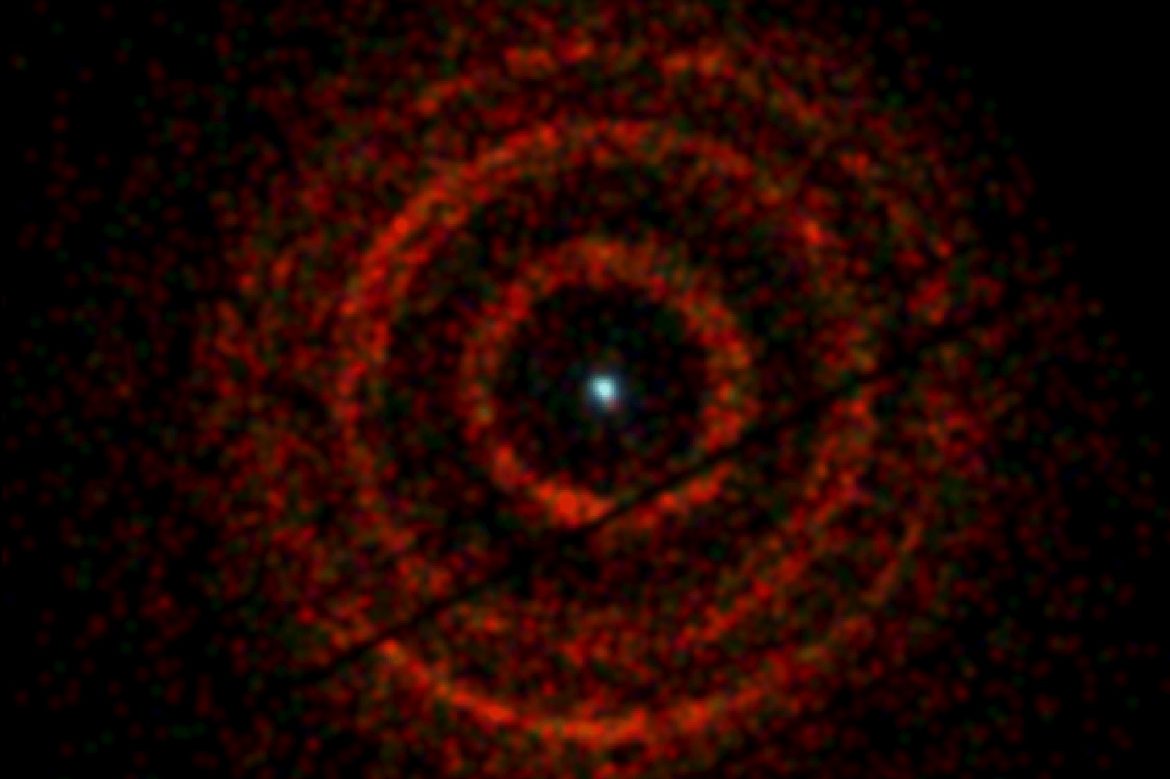When a hungry mouth swallows a big morsel…
Taking aim at Constellation Cygnus (The Swan) with NASA’s Swift telescope, astronomers imaged concentric circles of dust reflecting the X-rays emanating from a black hole 8,000 light years away which flared as it swallowed a big lump of matter. The structure, covering an area a third the size of full moon, takes root from a black hole in the binary system named V404 Cygni which also includes a sun-like star. The image, taken in X-ray wavelengths, show rings which form when the light from the flare on the black hole (white spot at center) hits the dust clouds.
Imaged by a team of astronomers at the University of Leicester, UK, on June 30, the rings were produced by a giant flare on the black hole on June 26. A video, showing the rings first brighten and then fade, were made with new images taken during follow-up observations on July 2 and 4.
The gas stolen from the companion star forms an “accretion disk” around the black hole. Before crossing the “event horizon” to be swallowed by the hungry monster at the center, the matter accumulates at disk’s inner edge where it attains great speed and temperatures. And when a big lump detaches to fall in through the event horizon, it emits intense X-rays.
The rings are actually “light echoes” which occur when light from the flare, dispersed in all directions, hit the clouds of dust. Part of the light is reflected towards us by dust particles in the cloud. But as the reflected light follows a slightly longer route and arrives with a slight delay compared to the light coming directly at us, the slight difference causes the light echo that forms the rings which expand in time. As the light is reflected by two separate dust clouds 4,000 and 7,000 light years away on its way towards us, two separate rings form.
REFERENCES
- 1. “NASA’s Swift reveals a black hole’s bull’s eye”, NASA/Goddard Space Flight Center, 9 July 2015

